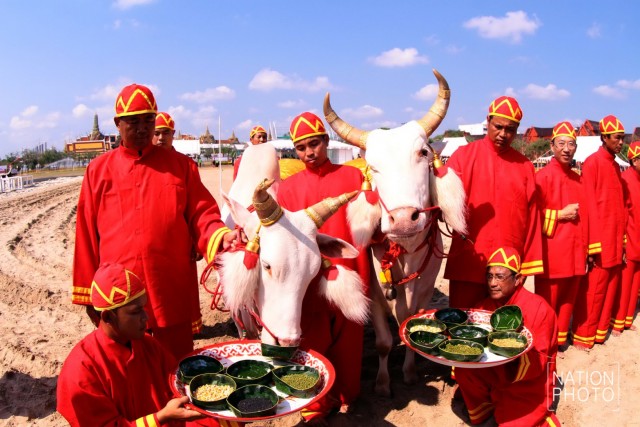Sart Day

The Thai Sart Day refers to merit-making activities in the middle of the traditional Thai year, and if counted by the lunar calendar, falls on the fifteenth day of the waning moon of the tenth lunar month (usually some time during September) The word “Sart” is derived from the Indian language, Pali, and means “season”, while in English it means “autumn”. In fact, the season of Sart or the autumn is the time at which food crops begin to ripen. However, autumn takes place only in countries which are situated above the tropical zone, such as the countries in Northern Europe, China and the northern part of India. Thus, due to Thailand’s geographical location in the tropics, the Thai Sart Day has no connection with the autumn or the ripening season at all. At this time of the year our rice has not yet ripened and only some fruits are mature enough to be eaten. Meanwhile, the countries which have the season of autumn will take this time to joyfully celebrate the occasion as their crops bear their first yield and a wide assortment of fruits and vegetables are in bountiful supply.

In ancient times, people of all races believed that the first harvest of rice, fruit and all other forms of food, including the first catch of fish or any other animal, should be offerd to the holy spirits which, they believed, were the creators of food crops and animals. As a result, by appeasing the spirits, in theory the people were protected from starvation. However, during years in which there were bad harvests or food shortages, they believed that this was caused by the indignation of the holy spirits who might have been angry with human actions. Therefore, the ancient people were very much afraid of these invisible beings and to please them, people made offerings and sacrifices in their honour. Krayasart which means food for the Sart Rite is prepared from rice, bean, sesame and sugar cooked into a sticky paste and then wrapped with a banana leaf. After making Krayasart people would take it to the temple to be offfered to the monks on Sart Day. At the temple, a raised-platform would be erected in a long line on the temple grounds and the monk’s alms-bowls would be placed on it. People would then put Krayasart in the alms-bowls till they were full of Krayasart. Then Krayasart would be transferred into a bamboo basket by the temple boys. At the same time, food and dessert would be separately offered to the monks at their lodging. At The end of the offering ceremony, people would perform a ceremony of pouring the water of dedication, in order to transfer merit to other beings, as people believe that if they did not offer Krayasart to monks, their dead relatives would have nothing to eat and thus they would be condemned as having no gratitude towards their benefactors.

After finishing their meals, the monks would consume Krayasart as their dessert, since on that day people had nothing to offer apart from ripe dainty bananas and Krayasart. Naturally Krayasart is very sweet, thus it is recommended to be eaten with bananas, especially dainty bananas. After making merit, people would exchange the remaining Krayasart among themselves. In so doing, they could have the opportunity to test Krayasart cooked by others. As a result, anyone whose Krayasart had an excellent taste would have his good name spread from mouth-to-mouth. In those days, people preferred to prepare Krayasart by themselves and it was not available in the market. Thus, when one made something to eat, he would give it to his neighbors free. Above all, if someone had work which required a huge amount of labor, his neighbors would come forward to help at once. This brought about unity and strengthened friendship among local residents. Meanwhile, the focal point of the community was the Buddhist temple, which symbolised the Buddhist religion and acted as a major unifying element, especially during festivals and merit-making ceremonies. The temple was used as a place of learning, where people came to perform various activities and at the same time took an opportunity to wear new clothes to show off to their friends, as in those days, people had hardly any other chance to do so. Evidently, people’s lives have always been associated with the temple which has served as the core of village unity.

People in the past observed the Sart Rite with much enthusiasm. Now, however, the rite seems to have lost much of its significance, especially in Bangkok. Nevertheless it is still one of the most valuable Buddhist festivals to be observed countrywide.















































